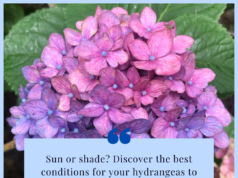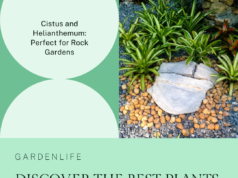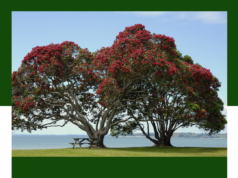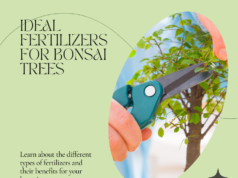
If you’re looking to add some greenery to your yard, cypress trees might be the first thing that comes to mind. While these classic trees are beautiful, there are many other options to consider that can add more variety and interest to your landscape. In this article, we’ll discover better tree options for your landscape choices that can help create a more visually appealing garden.
Key Takeaways:
- There are many tree options beyond cypress trees that can enhance the beauty of your landscape.
- Factors such as aesthetic preferences and environmental conditions should be taken into account when choosing trees for your yard.
- Options such as evergreen, deciduous, conifer, and fruit-bearing trees provide a wide range of visual interest and practical benefits for your yard.
- By considering diverse tree options, you can create a unique and visually stunning garden that will thrive for years to come.
Reasons to Consider Alternatives to Leyland Cypress
If you’re considering adding trees to your landscape, you may have come across the Leyland cypress tree as a popular option. However, it’s important to know that there are reasons to consider alternative trees for your garden. Here are a few reasons to keep in mind:
- Overuse: Leyland cypress trees have become overused, leading to a lack of diversity in gardens and landscapes.
- Vulnerability: These trees are vulnerable to disease and pests, making them high maintenance.
- Aesthetics: Leyland cypress trees can have a homogenous appearance, lacking the visual interest and appeal that a diverse selection of trees can bring to your garden.
- Environmental concerns: The growth rate of Leyland cypress trees can be detrimental to surrounding vegetation and may impact local ecosystems.
Considering these reasons, it’s worth exploring alternative tree options for your landscape that can bring renewed vitality and aesthetic appeal.
Comparing Leyland Cypress to Other Trees
Let’s take a closer look at how Leyland cypress compares to some popular alternative tree options:
| Leyland Cypress | Southern Magnolia | Japanese Maple | |
|---|---|---|---|
| Appearance | Pale green, conical shape | Glossy green leaves, white flowers | Colorful foliage, unique shapes |
| Growth Rate | Rapid growth | Moderate growth | Slow growth |
| Maintenance | High maintenance | Low maintenance | Low maintenance |
| Environmental Impact | Can outcompete other vegetation | Good for local ecosystems | Does not impact surrounding vegetation |
As you can see, there are many factors to consider when choosing trees for your landscape. While Leyland cypress may have some benefits, there are other options with unique characteristics that can add interest and vitality to your garden without the potential drawbacks.
Factors to Keep in Mind When Choosing Trees for Your Landscape.
Choosing the right trees for your landscape can seem overwhelming, but there are a few key factors to consider that can help make the process easier. First and foremost, consider your aesthetic preferences. Do you prefer a more natural look or something more formal? The trees you choose can help create the overall appearance of your garden.
Environmental conditions are also important to consider. Be sure to choose trees that are suited for your climate and soil type. Some trees require more sunlight and moisture than others, so take these factors into account when selecting your tree.
Aesthetic Preferences
| Aesthetic | Examples |
|---|---|
| Naturalistic | Oak, maple, pine |
| Formal | Holly, magnolia, arborvitae |
Another important factor is the purpose of the tree. Are you looking for privacy, shade, or decoration? Different trees can serve different purposes, so consider what you need the tree for before making your final decision.
Lastly, consider the maintenance and care required for your selected tree. Some trees require more upkeep than others, so be sure to choose something that fits your schedule and skill level.
“Choosing trees for your landscape can seem overwhelming, but by considering your preferences and environmental conditions, you can select the perfect tree to create your dream garden.”
Evergreen Options
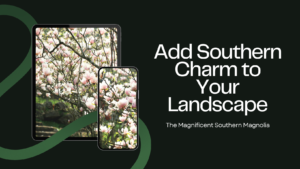
When it comes to choosing trees for your landscape, evergreens are a great option and offer numerous benefits. They offer year-round color and stay lush even in the winter months. In this section, we will highlight two evergreen tree options as alternatives to cypress trees.
Southern Magnolia
The Southern magnolia is a popular evergreen option due to its iconic, large, glossy green leaves and fragrant white flowers. This tree can reach heights of up to 80 feet and has a spread of 30-50 feet. Southern magnolias prefer full sun to partial shade and do best in well-drained soil that is slightly acidic. They thrive in USDA hardiness zones 7-9.
In addition to its beauty, Southern magnolias are also known for their toughness and resistance to pests and diseases. However, they should be pruned regularly to control their size and shape.
Thuja Green Giant
The Thuja Green Giant is a fast-growing evergreen known for its conical shape and soft, dense foliage. This tree can grow up to 60 feet tall and 20 feet wide and prefers full sun to partial shade. It is tolerant of a variety of soil types and pH levels and can thrive in USDA hardiness zones 5-9.
One of the biggest advantages of the Thuja Green Giant is its low maintenance requirements. It is rarely bothered by pests or diseases, and does not need regular pruning to maintain a healthy shape.
Consider the Southern magnolia and Thuja Green Giant as evergreen options for your landscape, adding year-round color, texture, and beauty to your garden.
Deciduous Options
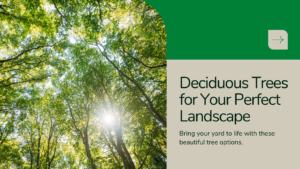
If you’re looking for deciduous options to replace cypress trees in your landscape, you have plenty of choices. Two particularly attractive options are the Japanese maple and river birch.
Japanese Maple
Known for its stunning foliage, the Japanese maple is a small tree that adds a vibrant burst of color to any landscape. With its delicate, lacy leaves that come in a variety of colors, including reds and greens, the Japanese maple makes for a beautiful focal point in any garden. Its compact size also makes it an excellent choice for those with limited space.
When planting Japanese maples, keep in mind that they prefer partial shade and well-drained soil. Regular pruning can help you shape and control its size.
River Birch
The river birch is a medium-sized tree that boasts attractive bark and delicate leaves that turn a stunning yellow color in the fall. It’s a hardy option that’s perfect for those who live in areas with harsh winters. As a bonus, the river birch also provides valuable food and shelter for local wildlife.
When planting river birches, choose a spot with moist soil and full sun to partial shade. They will require regular pruning to keep their shape and size under control.
| Japanese Maple | River Birch |
|---|---|
| Delicate, lacy leaves in a variety of colors | Attractive bark and delicate, yellow leaves in the fall |
| Small size, perfect for limited space | Medium size, hardy |
| Partial shade and well-drained soil preferred | Moist soil and full sun to partial shade preferred |
Whether you choose the Japanese maple or river birch, both deciduous options offer unique aesthetic appeal that will enhance any landscape. Choose the one that best suits your preferences and landscape needs.
Conifer Options
In addition to evergreen trees like Southern magnolia and Thuja Green Giant, and deciduous options like Japanese maple and river birch, conifers are excellent alternatives to cypress trees for your landscape.
The weeping blue atlas cedar and blue spruce are two beautiful options that will provide visual interest and a unique touch to your garden.
Weeping Blue Atlas Cedar
The weeping blue atlas cedar is a stunning conifer known for its irregular branching, drooping habit, and blue-green needles. It can grow up to 30 feet tall and wide and thrives in full sun to partial shade.
To keep your weeping blue atlas cedar healthy, ensure adequate water during dry spells and avoid compacted or poorly-drained soil. Prune your tree as needed to maintain its shape and prevent overcrowding.
Blue Spruce
The blue spruce is a popular conifer with striking blue-silver needles and a distinctive conical shape. It can grow up to 75 feet tall and 30 feet wide and prefers full sun and well-drained soil.
To keep your blue spruce healthy, ensure good soil drainage and regularly prune the lower branches to promote healthy growth.
Fruit-Bearing Options
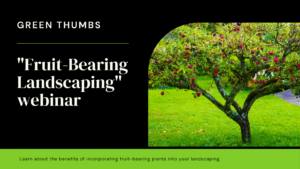
Looking to add some extra beauty to your landscape? Consider fruit-bearing trees as a delicious and visually appealing alternative to cypress trees. With their colorful blooms and tasty, fresh fruit, apple and cherry trees make a wonderful addition to any garden.
There are many different varieties of apple and cherry trees to choose from, each with their own unique characteristics and fruit production. Some popular varieties of apple trees include Honeycrisp, Red Delicious, and Granny Smith, while popular cherry tree options include Bing, Rainier, and Montmorency.
| Tree Type | Popular Varieties | Fruit Production |
|---|---|---|
| Apple Trees | Honeycrisp, Red Delicious, Granny Smith | Annual production, can vary by variety |
| Cherry Trees | Bing, Rainier, Montmorency | Annual production, can vary by variety |
When selecting fruit-bearing trees, it’s important to keep in mind factors such as pollination, planting location, and maintenance needs. Some varieties of each tree require a partner tree for proper pollination and maximum fruit production. Additionally, proper pruning and care can help ensure healthy growth and bountiful fruit harvests.
Including fruit-bearing trees in your landscape provides not only aesthetic appeal but also the added bonus of fresh, tasty fruit. Consider adding apple and cherry trees to your outdoor space for a visually stunning and fruitful update.
FAQ
Q. Why should I consider alternatives to Leyland Cypress?
A. There are several reasons to consider alternative tree options for your landscape. Leyland Cypress trees can be prone to diseases and pests, and a single disease can quickly spread to the entire planting. Additionally, relying solely on one type of tree can create a monotonous and less visually appealing landscape. Exploring alternative tree options can add diversity, beauty, and resilience to your garden.
Q. What factors should I keep in mind when choosing trees for my landscape?
A. When selecting trees for your landscape, consider factors such as your aesthetic preferences, the environment, and the specific needs of the trees. Think about the size, shape, and color of the trees, as well as their potential growth rate and maintenance requirements. It’s important to choose trees that are well-suited to your climate, soil conditions, and available space.
Q. What are some evergreen options as alternatives to cypress trees?
A. Two evergreen options to consider are the Southern magnolia and Thuja Green Giant. The Southern magnolia is known for its large, glossy leaves and fragrant flowers, while the Thuja Green Giant is prized for its fast growth, dense foliage, and tolerance to various soil types. These trees provide year-round greenery and can enhance the visual appeal of your landscape.
Q. Can you suggest any deciduous tree options?
A. If you’re looking for deciduous tree alternatives to cypress trees, consider the Japanese maple and river birch. The Japanese maple offers unique foliage colors and textures, adding visual interest to your garden. The river birch, on the other hand, features beautiful peeling bark and can tolerate wetter soil conditions. Both trees can add charm and variety to your landscape.
Q. Are there any conifer options as alternatives to cypress trees?
A. Yes, two conifer options to consider are the weeping blue atlas cedar and blue spruce. The weeping blue atlas cedar is known for its cascading branches and striking blue-green needles, making it a visually stunning addition to any landscape. Meanwhile, the blue spruce features a distinctive blue-hued foliage that contrasts well with other trees and plants. Proper care and suitable growing conditions are important for the optimal growth and health of these conifer trees.
Q. What are some fruit-bearing tree options as alternatives to cypress trees?
A. Apple trees and cherry trees are popular fruit-bearing options to consider. Apple trees come in various varieties and can provide an abundance of delicious fruits, but keep in mind that some varieties require cross-pollination for fruit production. Cherry trees also come in different types, with some being sweet cherries and others being sour cherries. When selecting fruit-bearing trees, consider not only the fruit production but also the pollination requirements and maintenance needs.
Conclusion
Now that you’ve explored various tree options beyond cypress trees, you can make an informed decision for your landscape. Remember to consider factors such as aesthetic preferences, environmental conditions, and maintenance requirements. By diversifying your tree choices, you’ll create a visually appealing garden that reflects your personality and style.
Choosing alternatives to leyland cypress can also bring various benefits, such as improved soil health, reduced pest problems, and decreased maintenance costs. Whether you opt for evergreen, deciduous, conifer, or fruit-bearing trees, make sure to research their growth habits and care instructions thoroughly.
Keep in mind that a well-planned landscape can increase your property value and create a welcoming atmosphere for your family and guests. So, go ahead and experiment with different tree options to create your dream garden. Your efforts will be rewarded with a lush, colorful landscape that you can enjoy for years to come.




